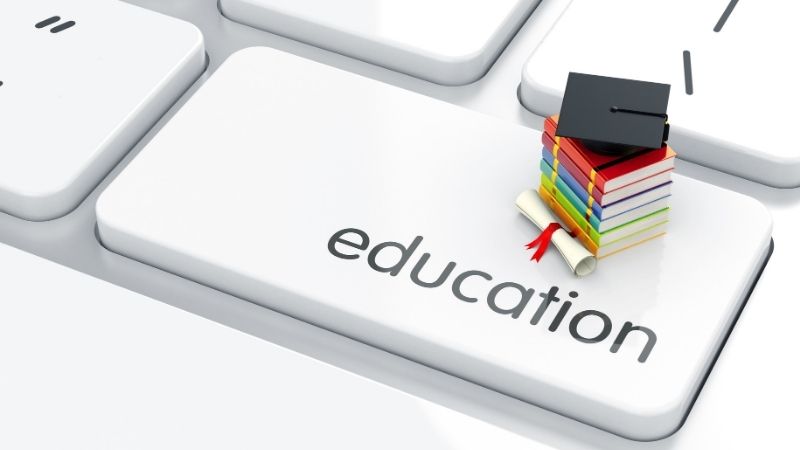
Individualized Education Programs (IEPs) are essential tools in meeting the unique educational needs of students. This article aims to guide readers through the process of crafting successful IEPs by outlining the steps involved, from setting clear and measurable goals to implementing, reviewing, and making necessary modifications.
By emphasizing the importance of considering each student's specific requirements, this article seeks to provide a knowledgeable and empathetic perspective that will empower educators and parents alike in ensuring an inclusive and effective educational experience for all students.
Key Takeaways
- IEPs address unique educational needs and create personalized education plans.
- Collaboration between educators, parents, and professionals is crucial in the development of IEPs.
- Clear and measurable goals in an IEP provide a roadmap for educators and students, allowing for targeted growth and objective assessment.
- Successful implementation of an IEP involves regular monitoring of student progress, tailored instruction and support, ongoing assessment, and collaboration among students, teachers, and parents.
Understanding the Importance of Individualized Education Programs (IEPs
The importance of individualized education programs (IEPs) lies in their ability to address the unique educational needs of students. Understanding IEP requirements is essential for creating personalized education plans that cater to each student's specific learning challenges and strengths.
By individualizing the educational experience, IEPs provide targeted support and accommodations necessary for students to succeed academically and socially. These personalized education plans are designed through a collaborative process involving educators, parents or guardians, and other professionals knowledgeable about the student's needs.
The benefits of personalized education plans extend beyond academic achievement; they empower students by promoting self-advocacy skills, fostering independence, and nurturing a sense of inclusivity within the school community. Additionally, IEPs ensure that students with disabilities have equal access to an appropriate education, promoting freedom in pursuing their educational goals.
Setting Clear and Measurable Goals in an IEP
Setting clear and measurable goals within an IEP is essential for ensuring the effectiveness and progress of the education program. Clear objectives provide a roadmap for both educators and students, enabling them to focus their efforts on specific areas of learning.
By establishing these clear objectives, educators can tailor instruction to meet the individual needs of students, promoting targeted growth in areas such as academics, communication skills, social-emotional development, and independent living skills.

Measurable outcomes allow for objective assessment of student progress and facilitate data-driven decision-making regarding instructional strategies and modifications. They also enable parents or guardians to track their child's development effectively.
The inclusion of clear objectives and measurable outcomes in an IEP ensures that all stakeholders are working towards a common understanding of what success looks like for each student within the framework of their unique educational requirements.
The Process of Developing an Individualized Education Program (IEP
Developing an Individualized Education Program (IEP) involves a series of carefully planned steps to ensure the creation of a tailored educational plan for students with special needs.
This process requires the collaboration of various stakeholders, including parents, teachers, and specialists, who work together to develop strategies that address the unique learning requirements of each student.
Individualized planning involves assessing the student's strengths and weaknesses, identifying specific goals that are clear and measurable, and determining appropriate accommodations or modifications in instruction.
It is crucial to consider the student's individual needs, interests, and preferences when developing an IEP.
The plan should be flexible enough to allow for ongoing evaluation and modifications as necessary.

Implementing an IEP: Strategies for Success
Effective goal setting and monitoring student progress are crucial components of implementing an individualized education program (IEP).
By setting clear, specific goals that align with the student's unique educational requirements, educators can provide targeted instruction and support.
Regularly monitoring progress allows for ongoing assessment and adjustments to ensure the student is making meaningful advancements towards their goals.
Effective Goal Setting
One crucial aspect to consider when establishing goals for an individualized education program (IEP) is ensuring alignment with the student's specific educational needs. Effective strategies for goal setting in an IEP involve a combination of knowledge, empathy, and attention to detail.
It is important to consider the student's strengths, weaknesses, and interests when determining goals that will promote their academic growth. By incorporating effective strategies such as providing clear objectives, breaking down complex tasks into manageable steps, and utilizing visual aids or technology tools, educators can enhance student engagement and motivation.
Additionally, involving the student in the goal-setting process can foster ownership and increase their commitment to achieving those goals. Ultimately, effective goal setting within an IEP serves as a roadmap for success by tailoring instruction to meet the unique educational requirements of each student while promoting their freedom to learn and grow.
Monitoring Student Progress
Monitoring student progress involves regularly assessing and tracking the academic performance and growth of students, providing valuable feedback to guide instructional adjustments.

To effectively monitor student progress, educators can utilize various tracking methods and data analysis techniques. These methods may include formative assessments, summative assessments, classroom observations, portfolios, and standardized tests.
Formative assessments such as quizzes or class discussions allow teachers to gather ongoing feedback on student understanding and make immediate instructional adjustments.
Summative assessments such as exams or projects provide a comprehensive measure of student learning at the end of a unit or grading period.
Classroom observations enable educators to observe student behavior, engagement levels, and interactions with peers in real-time.
Data analysis involves analyzing test scores, grades, attendance records, or other relevant data points to identify trends and patterns in student performance over time.
Regularly Reviewing and Monitoring an IEP
Regularly reviewing and monitoring an IEP is crucial to ensure the effectiveness of the individualized education program.
One key point in this process is tracking student progress, which allows educators to assess whether the goals set in the IEP are being met.

Tracking Student Progress
To assess student progress, it is important to establish a systematic and objective method of tracking academic growth and skill development within the context of an individualized education program (IEP).
Student evaluation plays a crucial role in this process, as it provides valuable insights into the effectiveness of instructional strategies and interventions.
Data analysis is a key component of tracking student progress, as it allows educators to identify patterns and trends over time. By collecting and analyzing various types of data, such as standardized test scores, classroom assessments, and anecdotal observations, educators can gain a comprehensive understanding of each student's strengths and areas for improvement.
This knowledge enables them to make informed decisions about the necessary modifications to the IEP goals and interventions.
Overall, tracking student progress through rigorous evaluation and data analysis ensures that their unique educational needs are being met effectively within the framework of an IEP.
Adjusting Goals as Needed
Adjusting goals as needed requires careful consideration of the data collected through student evaluation and analysis. Modifying objectives and updating targets are essential components of crafting successful Individualized Education Programs (IEPs) that meet the unique educational requirements of each student. By reviewing the progress made by the student, educators can identify areas where adjustments to goals may be necessary. This process involves analyzing various forms of data, such as academic assessments, teacher observations, and input from parents or guardians. It is crucial to approach this task with empathy and a deep understanding of the individual needs of each student. By making modifications to an IEP based on accurate data analysis, educators can ensure that students continue to receive appropriate support tailored to their changing needs.
Transition: With a clear understanding of how goals are adjusted based on evaluation and analysis, we can now explore the next step in crafting successful IEPs: making modifications to an IEP based on adapting to changing needs.

Making Modifications to an IEP: Adapting to Changing Needs
Periodically reviewing and modifying an individualized education program (IEP) is crucial in order to effectively adapt to the changing needs of students with unique educational requirements. Adapting strategies and addressing challenges are essential components when making modifications to an IEP.
Adapting strategies:
- Implementing alternative teaching methods or instructional materials
- Modifying assessments to accommodate different learning styles
- Incorporating assistive technologies for improved access to educational materials
Addressing challenges:
- Identifying specific areas where the student may struggle
- Providing additional support or accommodations in those areas
- Collaborating with teachers, parents, and specialists to develop targeted interventions
Ensuring the Student's Unique Educational Requirements Are Met in an IEP
Regularly assessing and modifying the IEP is crucial to ensure that the student's educational needs are effectively met.
A student-centered approach is essential in crafting an IEP that addresses the unique requirements of each student. Personalized learning allows for tailored instruction and interventions that cater to individual strengths, weaknesses, and interests.
By incorporating a variety of assessment methods, such as observations, standardized tests, and progress monitoring tools, educators can gather comprehensive data on a student's academic performance and progress. This information serves as a basis for developing goals and strategies within the IEP.
Ongoing evaluation of the IEP ensures that it remains relevant and effective in meeting the changing needs of the student. Regular communication with parents, teachers, specialists, and other relevant stakeholders is vital in ensuring continuous collaboration towards achieving educational success for all students.

Frequently Asked Questions
How Can Parents Play an Active Role in the Development and Implementation of Their Child's Iep?
Parent involvement is crucial for the development and implementation of a child's IEP. Active participation allows parents to contribute their unique insights, advocate for their child's needs, and collaborate with educators to ensure the program aligns with the student's educational requirements.
What Are Some Common Challenges That Educators May Face When Implementing an IEP, and How Can They Overcome Them?
Educators may face challenges when implementing an IEP, such as lack of resources or support. Effective strategies to overcome these challenges include collaborative problem-solving, ongoing communication with all stakeholders, and utilizing research-based interventions to meet individual student needs.
Strategies and tools exist to aid educators in regularly reviewing and monitoring a student's progress towards their IEP goals. These resources assist in tracking performance, identifying areas of improvement, and making necessary modifications to ensure educational requirements are met.
Can You Provide Examples of Modifications That Can Be Made to an IEP to Accommodate a Student's Changing Needs?
Modifications to an IEP can be made to accommodate a student's changing needs. These modifications may include adjustments in instructional methods, materials, or environment, as well as providing additional support or assistive technology to ensure the student's educational requirements are met.
How Can Collaboration Between Different Professionals, Such as Teachers, Therapists, and Support Staff, Contribute to the Success of an Iep?
Collaboration between professionals, such as teachers, therapists, and support staff, benefits the success of an IEP. Effective communication strategies enhance coordination and ensure that all team members are informed about the student's unique educational requirements.
 Careers in EducationElementary EducationHigh School EducationEducational TechnologyTeaching StrategiesSpecial EducationPrivacy PolicyTerms And Conditions
Careers in EducationElementary EducationHigh School EducationEducational TechnologyTeaching StrategiesSpecial EducationPrivacy PolicyTerms And Conditions
